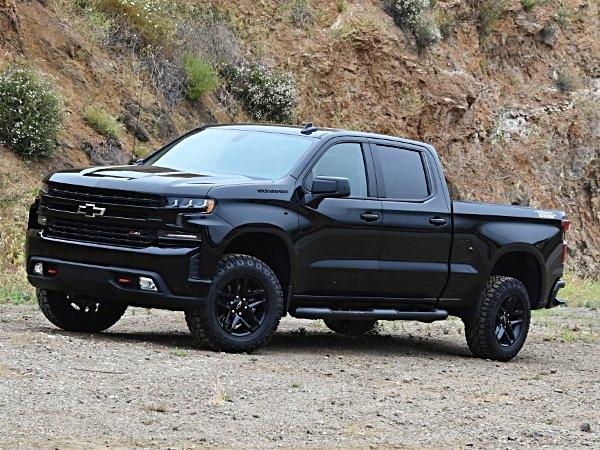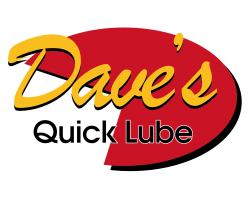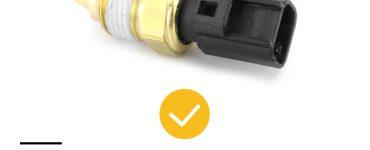Determining what is high mileage for a 6.6 Duramax diesel engine involves taking a comprehensive look at the design, durability, and typical performance of this powertrain. Commonly found in the hood of heavy-duty Chevrolet and GMC trucks, the Duramax diesel is known for its robustness and the capacity to endure significant mileage with proper maintenance. As with any vehicle, the definition of high mileage can vary, depending on several factors, including maintenance history, usage conditions, and individual truck build quality.
When assessing high mileage for a 6.6 Duramax diesel, it’s essential to consider the engine’s capability and the inherent longevity of diesel engines. Typically, diesel engines are engineered to withstand higher stress levels and longer running times than their gasoline counterparts. As a result, a Duramax engine with 200,000 miles may still have much life left, provided it has been well-maintained. Furthermore, the performance and reliability of high mileage Duramax engines can remain consistent with rigorous adherence to the manufacturer’s recommended service intervals, alongside timely repairs and quality parts replacements.
Key Takeaways
- A 6.6 Duramax diesel can endure significant mileage with proper care, often surpassing 200,000 miles.
- Diesel engines like the Duramax are designed for longevity and can maintain performance with regular maintenance.
- Owner dedication to maintenance and responsible driving habits contribute greatly to the longevity of the Duramax.
Understanding the Duramax Diesel Engine
The 6.6 Duramax Diesel engine, synonymous with robust performance and reliable heavy-duty operation, has been a significant player in the diesel engine market, particularly for GM and Isuzu’s collaborative ventures in pickup trucks and commercial vehicles.
History and Development
The Duramax Diesel Engine was born out of a partnership between General Motors (GM) and Isuzu in the late 1990s. Production began in 2001 at the DMAX Ltd. plant in Ohio. The aim was to replace the aging Detroit Diesel engines and to compete more effectively in the heavy-duty diesel engine segment, primarily in America.
Technical Specifications
The Duramax is a 6.6-liter V8 turbo-diesel engine renowned for its impressive power and torque figures. Since its inception, it has seen various upgrades including the use of diesel exhaust fluid to reduce emissions and enhancements to the durability of components. As of recent variants, performance specs include upwards of 445 horsepower and 910 lb-ft of torque.
Engine Variants
Several major iterations of the Duramax have been released, each with specific RPO codes:
- LB7: Introduced durability and turbocharged technology.
- LLY: Transitioned to improved cooling and EGR.
- LBZ: Boosted performance with higher horsepower.
- LMM: Incorporated a diesel particulate filter for cleaner emissions.
- LML: Enhanced power and implemented strict emission controls with the introduction of diesel exhaust fluid.
- L5P: Represents the latest generation with significant overall enhancements.
Common Usage
Duramax engines are commonly found in a variety of vehicles including the GMC Sierra and Chevy Silverado pickup trucks, as well as the Chevy Kodiak, GMC TopKick, GMC Savana, and Chevy Express commercial vehicles. These engines are designed to cater to heavy towing needs and commercial hauling.
Comparisons with Other Brands
When benchmarked against competitors like the Cummins engines in Ram trucks and the Ford Powerstroke typically found in the F-250, the Duramax holds its own with a balance of performance, reliability, and technological advancements. These engines are a stronghold in the American market.
Innovation and Milestones
Over the years, the Duramax has evolved significantly. Notably, the L5P variant marked a substantial leap in performance. Innovations like the use of an advanced diesel particulate filter and exhaust gas recirculation (EGR) have kept the Duramax in line with emission standards while maintaining its reputation as a power-heavy and reliable diesel engine.
Defining High Mileage for Duramax
When considering a 6.6 Duramax diesel engine, the definition of high mileage can be influenced by a combination of factors including maintenance history and usage characteristics.
Mileage Benchmarks
The Duramax engine, known for durability, often surpasses 200,000 miles without significant issues. Many owners report mileages over 300,000 miles when well-maintained. These benchmarks help in classifying what is considered high mileage for these engines.
Factors Affecting Duramax Lifespan
Several factors play a pivotal role in the longevity of a Duramax engine. Regular maintenance, especially timely oil changes using high-quality synthetic oil, can significantly extend engine life. The engine’s life expectancy is also influenced by driving habits, with harsh conditions contributing to quicker wear and tear.
Signs of a High Mileage Engine
A high-mileage Duramax may exhibit signs such as reduced fuel economy, oxidation of engine components, or the need for more frequent servicing. Components like the water pump and fuel pump may require inspection or replacement to forestall potential failures.
Impact on Resale Value
The resale value for high-mileage Duramax trucks varies. Well-maintained examples with complete maintenance records can retain a higher value. However, potential owners should expect a decrease in value as mileage increases, considering the cost of upcoming maintenance and repair needs.
Performance and Reliability
When assessing the performance and reliability of a 6.6 Duramax diesel, it is essential to consider engine metrics, durability indicators, maintenance practices, and the potential challenges that could affect its longevity.
Engine Performance Metrics
The 6.6 Duramax diesel, known for its robust performance, offers impressive fuel mileage and acceleration, crucial for heavy-duty pulling tasks. On average, Duramax engines are rated for 15-20 mpg in combined driving conditions. Engine power is a hallmark, with torque typically ranging between 910 to 1,105 lb-ft, providing the necessary force for towing and hauling.
| Engine Aspect | Typical Performance Metric |
|---|---|
| Fuel Mileage | 15-20 mpg (combined) |
| Torque | 910-1,105 lb-ft |
| Acceleration | Robust for the vehicle’s size |
| Towing Capacity | Up to 23,300 lbs (latest models) |
Identifying Durability and Reliability
Duramax diesels are designed with longevity in mind; a well-maintained unit can surpass 300,000 miles. Key factors influencing reliability include strict adherence to servicing schedules and the quality of replacement parts. Components such as injectors, EGR (Exhaust Gas Recirculation), DPF (Diesel Particulate Filter), SCR (Selective Catalytic Reduction), and DEF (Diesel Exhaust Fluid) systems play critical roles in operational durability.
Maintenance to Extend Life
Regular maintenance is paramount to extend the lifespan of the Duramax diesel. This includes timely engine oil changes, fuel filter replacements, air filter inspections, and glow plug checks. Servicing intervals should follow the manufacturer’s recommendations to prevent issues like overheating and minimize wear on the emissions and fuel systems.
- Engine Oil: Change every 3,000-5,000 miles
- Fuel Filter: Replace every 10,000-15,000 miles
- Air Filter: Check every service interval, replace as needed
- Glow Plugs: Inspect every service, and replace as necessary
- Injectors: Usually serviceable after 100,000 miles or as performance dictates
Challenges and Potential Issues
Despite the Duramax’s inherent strength, several challenges can affect its efficiency and durability. Overheating is a concern that must be monitored, as it can lead to significant engine damage. Emissions systems components, such as the EGR, DPF, SCR, and DEF, require vigilant attention to prevent failure. The fuel system, including injectors, is also prone to wear and tear and can be susceptible to impurities in fuel or clogging from inadequate maintenance.
Economics of Owning a High Mileage Duramax

High mileage for a Duramax diesel implies significant considerations in terms of cost, depreciation, and fuel economy. Owners face a balance between the possible benefits and inherent drawbacks when reaching higher mileage thresholds.
Cost of Ownership
The Cost of Ownership for a Duramax with high mileage involves recurring and potential expenses. These costs include:
- Routine Maintenance: Essential to prolong health and performance.
- Oil Change: Approximately every 5,000 miles.
- Air Filter: Replace every 15,000-30,000 miles.
- Fuel Filter: Change approximately every 15,000 miles.
- Major Repairs: Potentially more frequent as mileage increases.
- Warranty: Typically expires before reaching high mileage; owners should be prepared for potential out-of-pocket expenses.
Fuel Efficiency and Costs
Fuel Efficiency fluctuates based on vehicle condition and driving habits. A well-maintained high mileage Duramax can still achieve:
- Fuel Economy: Averages between 12 to 18 mpg depending on model and conditions.
- Diesel Costs: Can be higher than gasoline, but diesel engines often provide better gas mileage, impacting overall fuel expenses positively.
Understanding Depreciation
Depreciation is a critical factor for owners:
- A Duramax diesel’s Resale Value can hold better than many other vehicles, given its robustness.
- High mileage often accelerates depreciation, but adequate maintenance can mitigate this effect substantially.
Benefits and Drawbacks of Extended Use
The Benefits and Drawbacks of Extended Use encompass several aspects:
- Benefits:
- Durability: The Duramax is known for its longevity.
- Stable Resale Value: If maintenance records are kept diligently.
- Drawbacks:
- Increased Maintenance Costs: As components wear out over time.
- Potential for Reduced Performance and Fuel Economy: Without meticulous upkeep.
Customizing and Enhancements
Customizing a 6.6 Duramax diesel involves a range of modifications and upgrades that can enhance performance, efficiency, and aesthetics. These improvements are tailored to meet the specific needs of pickup truck enthusiasts and can range from simple accessory additions to complex performance upgrades.
Aftermarket Modifications
Aftermarket modifications for the Duramax diesel can significantly boost performance. One popular enhancement is installing a larger turbocharger or adding a twin-turbo setup for increased air intake, which, when paired with the robust Allison transmission, can help achieve higher power output. It is also common to upgrade the fuel injectors for more precise fuel delivery and to manage the higher airflow.
- Turbo Upgrades: Large or twin-turbo setups
- Fuel Injectors: High-flow injectors
Upgrades for Efficiency and Performance
Improvements in efficiency and performance often go hand-in-hand, as optimized fuel economy can lead to better vehicle performance. Re-calibrating the engine control module (ECM) can lead to gains in fuel efficiency while also unlocking additional power from the engine. Owners might also consider aftermarket exhaust systems to reduce backpressure and improve emissions systems’ efficiency.
- ECM Tuning: Recalibration for improved fuel economy and performance
- Exhaust Systems: High-flow units for reduced emissions
Accessorizing for Function and Aesthetics
Accessorizing a Duramax extends beyond mere improvements in performance and efficiency; it also includes customizing the truck’s appearance and functionality. For pickup trucks such as the Chevy Silverado HD and GMC Sierra HD, exterior add-ons like LED light bars, custom grilles, and larger off-road tires can enhance both aesthetics and utility.
- Visual Enhancements
- LED Lighting: For improved visibility
- Custom Grilles: For distinctive looks
- Functional Accessories
- Tire Upgrades: Larger, off-road-ready tires
- Toolboxes: Added storage for practicality
Practical Advice for Duramax Owners
Duramax diesel engines, used in GMC Sierra and Chevy Silverado trucks, are known for their robust towing capacity and longevity. To ensure reliability and maintain high mileage efficiency, Duramax owners should adhere to specific maintenance practices and consider certain performance factors.
When to Consider Engine Replacement
High mileage for a Duramax diesel generally starts around the 200,000-mile mark. At this point, engine wear and performance issues may become more prominent. Owners should monitor for signs such as excessive oil consumption, coolant loss, or decline in fuel economy. Persistent issues, despite regular maintenance, may indicate the need for an engine replacement.
Maximizing Duramax Performance
To enhance performance, meticulously maintain the turbo and fuel systems. Clean periodically to prevent build-up and to optimize turbo boost. Use only high-quality fuel and engine oil to extend the life expectancy of the engine. Consider aftermarket enhancements for improved airflow and exhaust systems, while ensuring they comply with legal emissions standards.
Towing and Load Considerations
When using a Duramax for towing, understanding the engine’s towing capacity is crucial. Exceeding this limit can strain the engine and reduce its lifespan. Balance the load appropriately and avoid towing in overdrive to minimize stress on the drivetrain. Scheduled servicing after heavy towing is essential for ongoing maintenance.
Navigating Legal Emissions Standards
Duramax engines must adhere to state regulations for emissions systems. Regular checks and maintenance of the emissions system are critical. Failure to comply with these standards can lead to legal penalties and reduced engine efficiency. Always consult certified professionals to manage emissions-related updates or repairs.
Deciding on the Right Maintenance Schedule
For Duramax engines, following the proper service intervals is vital to maintaining reliability and fuel economy:
| Mileage Interval | Maintenance Task |
|---|---|
| 7,500 | Oil and oil filter change |
| 15,000 | Fuel filter replacement |
| 30,000 | Transmission fluid and filter service |
| 45,000 | Coolant flush |
| Annually | Inspection and cleaning of emissions components |
Adhering to these recommended service intervals helps ensure the longevity of the Duramax engine. Neglecting routine maintenance can lead to decreased performance and life expectancy.
Frequently Asked Questions – What is High Mileage for a 6.6 Duramax Diesel
Duramax engines are known for their robustness, but specific maintenance milestones are key to their longevity. Understanding when a 6.6 Duramax engine might need major maintenance, what constitutes high mileage, and the varying durability across models is essential for making an informed decision on purchasing or maintaining this type of engine.
At what mileage does a 6.6 Duramax typically require major maintenance?
For a 6.6 Duramax, major maintenance is often expected around 100,000 to 150,000 miles. This may include significant services like transmission work, fuel system overhauls, and addressing common wear items.
What is considered high mileage for a diesel engine in a heavy-duty truck?
In heavy-duty trucks, a diesel engine is typically considered high mileage after reaching 200,000 miles. However, many diesel engines, including the 6.6 Duramax, are known to surpass this mark with proper care.
Can a Duramax diesel with over 200,000 miles still be a reliable purchase?
A Duramax diesel with over 200,000 miles can still be a reliable purchase if it has been well-maintained with a detailed service history. Inspection by a qualified diesel mechanic is recommended.
What are the longevity expectations of a 2500HD with a 6.6 Duramax engine?
The 2500HD with a 6.6 Duramax engine can often exceed 300,000 miles with proper maintenance. Some users report longevity beyond this with rigorous upkeep.
How does the LBZ variant of the Duramax compare in terms of high mileage durability?
The LBZ variant of the Duramax, produced from 2006 to 2007, is regarded for its durability and often reaches high mileage without the need for major engine work. It is revered for its robust construction and fewer emissions-related components.
Among the different Duramax engine years, which are known for their superior reliability?
Duramax engines from model years 2001-2005 (LB7 and LLY) and 2006-2007 (LBZ) are often cited for their superior reliability and durability. Subsequent models also maintain strong performance records but may require more rigorous emissions-related maintenance.

